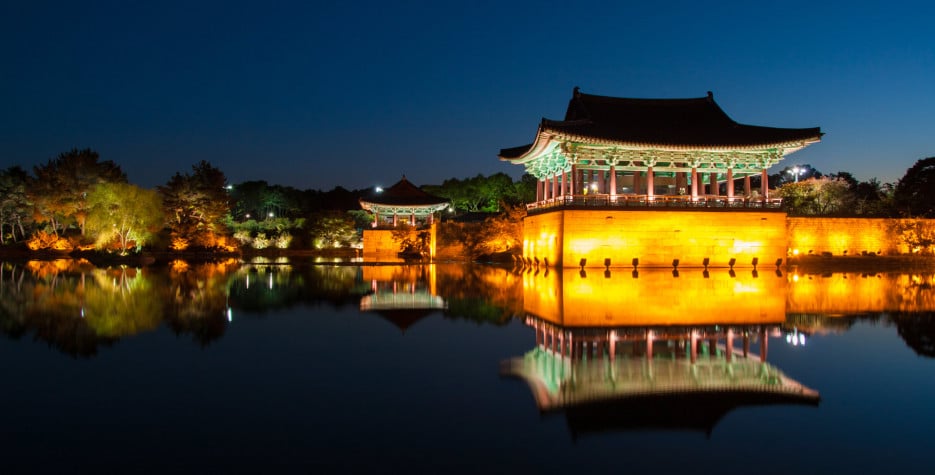Korean New Year in North Korea
Lunar New Year celebrations in North Korea include a traditional show of loyalty for the country's former leaders.
Citizens lay flowers and pay their respects at the foot of giant statues of Kim Il Sung and Kim Jong Il which stand on Mansu Hill, overlooking the capital of Pyongyang, This ritual is repeated across the country as people make shows of respect to portraits and statues of the Kims.
The holiday was briefly passed over under Kim Il Sung's rule, the practise was revived in 1989.
When is Korean New Year?
Known as Seollal, Korean New Year is the first day of the lunar Korean calendar.
It is the most important of the traditional Korean holidays. It consists of a period of celebrations, starting on New Year's Day.
The Korean New Year holidays last three days. It is customary and may be required under collective bargaining agreements for South Korean businesses to close for the lunar new year.
In South Korea, the festival centres on family reunions, food and placating the ancestors.
During the New Year festivities, it is common for adults to wear the colourful traditional costume, the Hanbok. Traditional women's hanbok consists of a blouse shirt or jacket and chima, a wrap-around skirt, which is usually worn full. Men's hanbok consists of a shirt and baji which means pants in Korea.
The soup that takes a year to eat
Tteokguk is a traditional Korean food that is customarily eaten for the New Year. The dish is a soup with thinly sliced rice cakes. According to tradition, the Korean New Year is similar to a birthday for Koreans, and having Tteokguk is part of the birthday celebration. Once you finish eating your Tteokguk, you are one year older.
Tteokguk can be served in a clear broth or heavy broth depending on what region in Korea you are in. Towns and villages close to the ocean make it as a clear broth since they mainly use seafood when making the broth, while in inland regions the broth is heavier as cow bones are used, as seafood is not readily available.
Folk games played on Seollal
Many traditional games are related to the Korean New Year. There's a traditional family board game yutnori played on Korean New Year. Men and boys also fly rectangle kites called Yeon and play jegichagi, a traditional sport in which an object is covered in paper and then kicked in a footbag-like style. Korean women and girls play neolttwigi, a game of jumping on a seesaw. Top spinning is also a traditional game enjoyed by children.
Lighting a "moon house" made of burnable firewood and branches is another tradition observed. This represents the new year's warding off of evil spirits. The moon house is frequently supplemented with wishes that people hope will come true in the upcoming year.
New Year's Eve
Celebrations on New Year's Eve in Korea are similar to western traditions such as parties and fireworks. A recent tradition is the ringing of the historic Boshingak Bell. The bell was originally constructed in 1396 and is now only rung on Lunar New Year.
Another New Year's Eve custom is playing Yunnori, a traditional board game.
A historic festival and a modern holiday
It is thought that the Korean New Year celebration emerged from China in the 3rd century. Samguk yusa, a document created in the thirteenth century, contains Korea's own account of the new year's celebration. In 488 AD, the new year was observed while Silla was ruled by its twenty-first king. According to the Korean historical work, Korean New Year was one of the nine major Korean festivals that included ancestral rites.
Even though Seollal is a traditional Korean festival that dates back many centuries, it didn’t become an officially recognised holiday in South Korea until 1985.
Under Japanese imperialist rule from 1895 to 1945, Lunar New Year was banned as it was deemed a morally and economically wasteful holiday. It still remained a popular holiday and as South Korea shifted from a military dictatorship towards a more democratic society in the 1980s, mounting pressure from the public to have official holidays and relax the country’s tiring work culture led to the holiday being added to the federal calendar as a three-day period.


